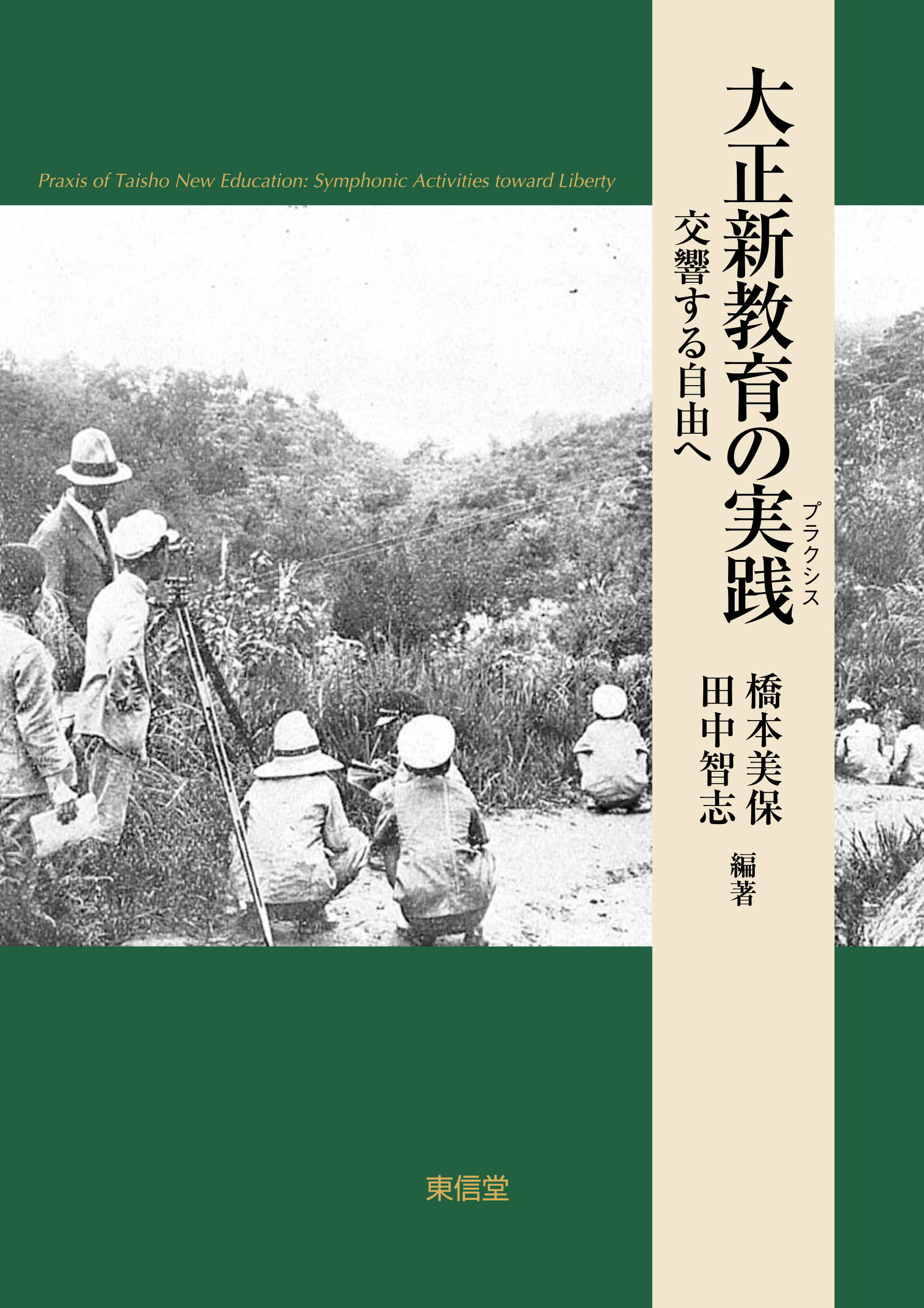
Title
Taishō shin kyōiku no jissen (The Praxis of the New Education Movement in the Taishō Period - Towards a Resonating Freedom)
Size
480 pages, A5 format, hardcover
Language
Japanese
Released
January 30, 2021
ISBN
978-4-7989-1681-1
Published by
TOSHINDO
Book Info
See Book Availability at Library
Japanese Page
Teacher-disciple relationships are common in the realms of philosophy and ideology. Such as that, for example, between the French philosophers Henri Bergson and Étienne Henri Gilson. In a broader sense, the teacher-disciple relationship is also evident between European and American thinkers and philosophers and Japanese educational researchers and practitioners. The Japanese educators and practitioners of the Taishō New Education Movement learned from and were inspired by the ideas and philosophies of such Western thinkers as the afore-mentioned Bergson, Jean-Ovide Decroly, Joseph Edmond Demolins, and Maria Montessori in Europe, and John Dewey, William Heard Kilpatrick, and Helen Parkhurst in the United States.
What is this activity of learning, of being inspired and awakened? Take, for example, the way the same book may evoke different reactions in different people. Some are inspired and awakened, others are not. Given this, might we not surmise that we learn from, are inspired by, or awakened by some event or discourse because we already share a contextual commonality with that event or discourse? This contextual commonality is a shared intrinsic world of meaning that is inseparable from the sensibility of the individual person. Contextual commonality is also something that becomes apparent after the fact, in other words, something that becomes visible when we think about it retroactively.
The historical and ideological study of the Taisho New Education Movement is an undertaking of “retroactive thinking” that should be distinguished as something different from “abstract thinking” which seeks commonality in a diversity of multiple events and discourses. This book on the practice of those involved in the New Education Movement in the Taishō period is an undertaking of “retroactive thinking.” In fact, retroactive thinking is necessary here because it allows us to avoid the difficulties of speaking of practice in terms that distinguish the predicative and the performative. Ongoing practice is contrary to the predicative process by which such and such is established as fact. The retroactive thinking of practice is not a consideration of a physical phenomenon so much as it is the kind of thinking that a researcher applies when considering the thought of others. And this kind of thought involves originality.
This book tries to decipher what kinds of thinking went on in the various practices (praxes) inspired by the New Education Movement of the Taishō period. What kind of creativity was the objective of the people who sought to put into practice the “freedom” that emerged in this period in literature, the arts, religion, and philosophy? What compelled these people to become involved in education? To understand the dynamics of their thoughts, we must first understand the anticipatory homology of these people as they undertook to learn unfamiliar ideology and practice, and then focus our attention on the “conceptual ability” that enabled them to put into practice (with originality) what they had learned. As we try to clarify the thinking of these practitioners, we find ourselves applying the same “conceptual ability” or “imagination” to decipher their practices, and from this there is likely to emerge another contextual commonality.
(Written by TANAKA Satoshi, Professor, Graduate School of Education / 2021)



 Find a book
Find a book

